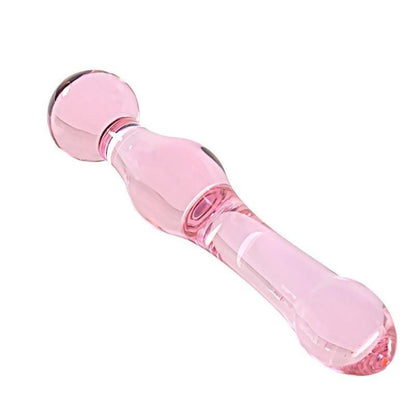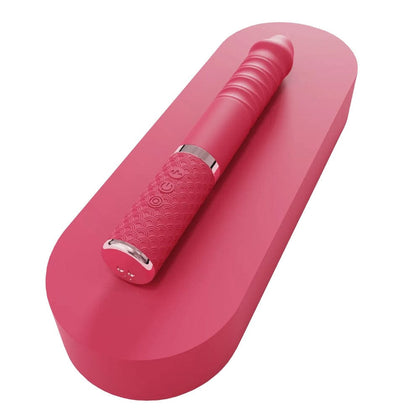
Giving your sex toy the TLC it deserves goes a long way. This ensures pleasure without any hassle while extending its shelf life. Plus, proper maintenance can improve your sexual experience by ensuring your toys perform their best every single time.
Neglecting hygiene and proper storage can result in bacterial infections, allergies, and the potential breakdown of your precious gadgets. In this blog, we're going to share with you tried-and-proven ways on how to clean your toys, how to store them, and when to say goodbye and replace an old friend. Following these steps will extend the lifespan of your butt plugs and dildos.
Why It's Important To Look After Your Toys
As said before, looking after your pleasure tools is also about safeguarding your health and ensuring each experience is always enjoyable.
Check Them Before Use
Before you start your kinky session, take some time to inspect your dildos and other toys.
- Examine your pleasure buddies for any crack, damage, or tear that could pose a risk. If you see any of them, it's time to say goodbye and get a replacement.
- Ensure that batteries or electronic components are functioning correctly. You want to avoid unwanted interruptions in the middle of fun with a sudden vibrator power outage.
- Verify there are no rough surfaces that could irritate your delicate part. Run your fingers over your toys; they should feel flawlessly smooth.
- Look for signs of material degradation, especially in porous toys. These types are known to harbor bacteria that can cause nasty infections.
- Confirm compatibility with lubricants to prevent material breakdown. The wrong lube can turn your fave toy into a sticky mess – and it's not fun at all.
Clean Before and After Use
If you have toys made of silicone, glass, and metal—you're in luck. They're easy to sanitize, as they're non-porous. Wash them with warm water and unscented soap, or use a sex toy cleaner. Be thorough but gentle—scrub away, but don't overdo it to avoid scratching the surface.
Jelly rubber and latex are a bit more high-maintenance as they're non-porous. They're known as breeding grounds for bacteria, so you must clean them thoroughly. Use warm water and a cleaner specifically formulated for porous toys. If the toy's instructions allow it, consider using a mild bleach solution to ensure it's hygienic for safe use.
Whatever the material, rinse your toy off after a good scrub. Soap residue can irritate your delicate areas, so rinse your toy under running water until it's residue-free. When drying, use a clean, lint-free towel to remove moisture or let it air dry.
Store Them Properly

Take the guesswork out of aftercare using individual storage bags for each toy. If you have five different butt plugs, you would need five storage bags to store them individually.
Your toys are not sunbathers—they shouldn't be lounging in direct sunlight. A shaded, dry area is where they'll thrive.
Replace Them When They Wear Out!
Material degradation is no joke. Keep a lookout for discoloration, odd smells, or a sticky surface. These are tell-tale signs that your pleasure buddy is throwing in the towel, and it's time for an upgrade.
Storing your tools properly and knowing when to let go ensures a safe, hygienic, and thrilling experience every time.
Understanding Material Safety
Different materials are used to manufacture adult toys. From silicone to glass and latex to metal, each offers a unique experience and requires a specific cleaning method.
The go-to options are silicone, stainless steel, borosilicate glass, and ABS plastic because their smooth surfaces don't hold bacteria. They're easy to clean, too. That means they're safer for internal use and last longer, too. Lots of chastity cages and dildos are crafted from these materials.
Jelly rubber, latex, and realistic-feel materials can be soft and flexible, but they have micro-pores that can hold onto bacteria. So cover these toys with a condom, and you'll keep things cleaner.
Always pair body-safe lubes with your toys. If the label doesn't shout 'body-safe,' don't buy it. Better be safe than regret later.
The Role of Lubricants in Toy Maintenance
Different types of lubricants are made to work with specific materials. Silicone-based lubricants can be long-lasting, but they're a no-go for silicone toys. They can cause a reaction that breaks down your beloved toy's material. Instead, save these lubes for your non-silicone toys.
Water-based lubricants, however, go with just about everything. Easy to wash off and suitable to all materials, they're a safe choice, especially if you're unsure.
Oil-based lubricants can be luxurious, but beware—they can degrade materials like latex and some plastics, turning your smooth operators into sticky messes.
After the fun, cleaning off lubricant residue helps maintain your toy's integrity. Warm water and mild soap usually work, but for best results, follow the cleaning instructions that come with your toy.
Dealing With Sensitive Skin and Allergies
If your skin is sensitive or you have allergies, pick the ones made of hypoallergenic materials. They're less likely to cause a reaction. If your toy still gives you irritations, hit pause and consult your healthcare provider. Prioritize safety and get some advice than to soldier on and potentially make things worse.
Give your toys a proper cleaning to avoid any allergens. Your skin will appreciate your effort.